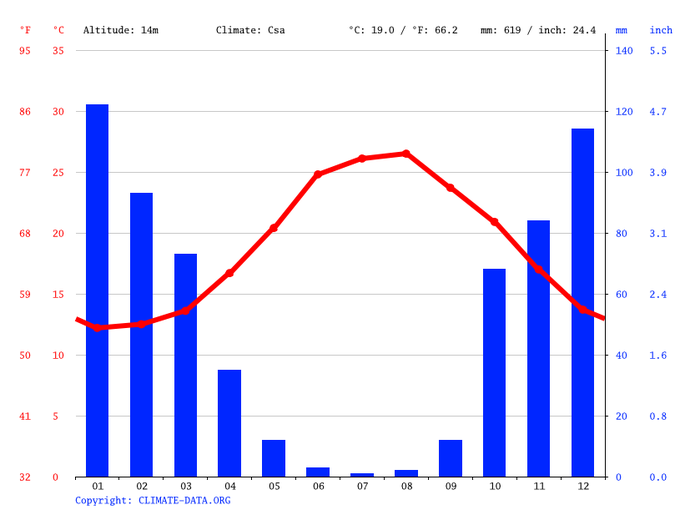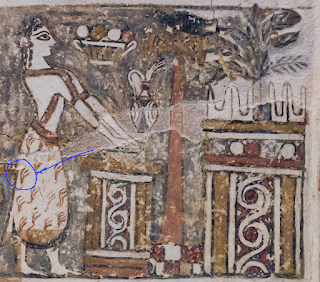This is the bull sacrifice scene from the Minoan Hagia Triada Sarcophagus, a late Minoan limestone sarcophagus, dated to around 1400 BC, excavated from a chamber tomb at Hagia Triada, Crete in 1903 and now on display at the Heraklion Archaeological Museum, Crete, Greece.
As far as I know, all the scenes depicted on this sarcophagus are interpreted as "funeral offerings". This particular scene is interpreted as: "...an offering table on which lies a trussed bull...blood...coming from the bull’s neck and pouring into a vessel next to the table. Beneath the table are two small goats, possibly awaiting a similar fate..."
"In some ways what we see on...sarcophagus is simple to understand: women and men...making sacrifices and preparing the deceased for burial before his tomb. However, looking more deeply, many questions remain. How is it to be read?"
So how indeed is this to be read?
I personally don't think this is a depiction of a funeral sacrifice at all...Here is why:
This is climate in Crete...The climatic year is divided into hot and dry half (Apr/May - Sep/Oct) and the cool and wet half (Sep/Oct - Apr/May)...
The hot and dry half starts when the calving of the wild Eurasian cattle used to start, so it's marked by animal calendar marker Bull...
The cool and wet half starts when the mating season of Cretan Ibex starts, so it's marked by animal calendar marker Goat...
So, does killing of the bull, with goats under the table, symbolise the end of the dry season and the beginning of the wet season? A very big deal in Crete...Hence all the leafy green vegetation at the altars everywhere...
The death of the bull brings the rebirth of nature...
I first talked about the climate in Crete and goat and bull as calendar markers in my post "Goat riding thunder god". In this post I talked about this larnax, a type of small closed coffin, box or "ash-chest" often used as a container for human remains. It was found in Mycenaean Tanagra cemetery which was dated to 14th - 13th century BC...
And it was definitely developed under huge Minoan influence. This can be seen from the fact that the bottom part of the panel depicts bull leaping, favourite "past time" of the Minoans. I would say that this activity was a religious ceremony performed during the bull part of the year, summer. In the top panel we see Ibex goat hunt. I would say religious ceremony performed during the goat part of the year, winter. The main question here is why was this panel divided like this? And why were these two scenes depicted separated like this?
I then talked about this bull/ibex duality in my post "Theseus ring" about two, officially, Mycenaean, but I think Minoan, rings, one depicting bull leaping and the other depicting a sacrifice made to an ibex.
Now the priestess which performs the bull sacrifice stands in front of an altar which stands in front of a shrine topped with "bull horns of consecration" from which a tree (of life) grows.
I talked about "bull horns of consecration" temples for the first time in my post "Sanctuary rhyton" where I analysed the scene depicted on the so called "Sanctuary Rhyton" from Zakros, Crete, Greece, dated to the Late Bronze Age, 1550-1500 BC.
The scene depicts a so called "Peak Sanctuary", a mountain top temple, one of many discovered on Crete, whose purpose and dedication is unknown. I proposed that this image actually explains that these mountain top temples were linked with the worship of the "goat of rain"...
Quite a lot of these Cycladic frying pens have depictions of boats as part of the decoration...Like this one...A boat depicted among the swirling spirals representing waves, or moving, running water...And right above the bow of the boat there is always a depiction of a fish...Which would suggest that Cycladic boatsmen were fishermen...





















No comments:
Post a Comment